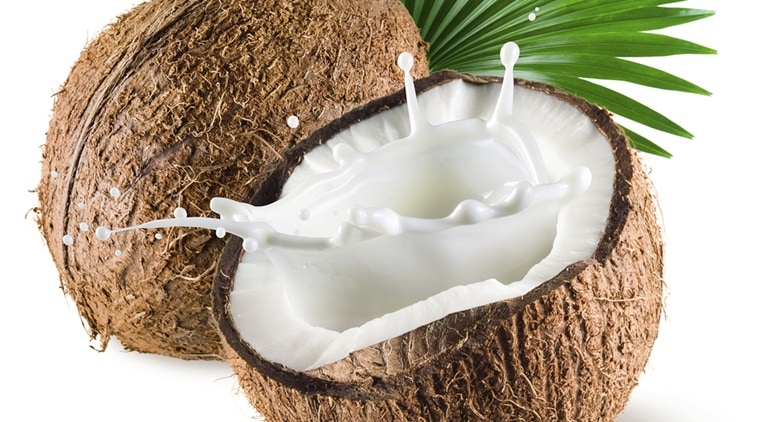Scientific Name: Moringa Oleifera
Other names:
"Malunggáy" in Philippines
"Sajina" in India, "Shojne" in Bengal
"Munagakaya" in Telugu, "Shenano" in Rajasthani, "Shevaga" in Marathi
"Nuggekai" in Kannada
"Drumstick Tree, Horse Radish Tree, Ben Oil Tree" in English
"La mu" in Chinese
Malunggay is a plant that grows in the tropical climates such as the Philippines, India, and Africa. It is widely used as vegetable ingredient in cooking, as herbal medicine for a number of illness and other practical uses. The plant can grow to as high as 9 meters with erect white trunks.
Malunggay or Moringa Oelifera (scientific name) is known for its healing wonders. Malunggay is widely used as vegetable ingredient in cooking, as herbal medicine for a number of illness and other practical uses. Malunggay is known as a very nutritious plant where it is used to combat malnutrition in third world countries especially for infants and nursing mothers. Malunggay is also called a "miracle tree" primarily for the various health benefits it can provide for almost all kinds of diseases and medical conditions. More over almost all of its parts have use - from its roots, pods, barks, flowers and leaves.
Malunggay's healing power
It good natural antibiotic.
Body aches due to infection. Boil some (7 stalks) Malunggay leaves in a cup of water. Drink it
while warm. Put a little salt just to taste.
The leaves are good for fresh wounds or cuts. Squeez the young leaves to extract juice. put the juice directly to the wound to prevent infection and swelling and to make the healing process faster.
It is good for those who have high blood pressure. Some eat the seeds to maintain their blood pressure normal.
It is good for a very nutritious meal or soup. Try Chicken tinola with malunggay leaves. If you are !00% pinoy, I am sure you know this.
Some use it for acne. If you have acne problems, it can help.
There are many more that Malunggay Tree can do. Listed below are some of the traditional herbal treatment of malunggay.
Malunggay Traditional Medicinal Uses and Health benefits
Scalp problems. Malunggay leaves pounded and combined with coconut oil is used to treat scalp problems and to promote hair growth.
Boosts immune system. Boiled malunggay leaves contain immune boosting nutrients used in sickness recovery.
Milk production in nursing mothers. Boiled malunggay leaves used to promote milk production in nursing mothers.
Asthma. Malunggay leaves combined with honey and calamansi or Lemon to treat cough and asthma
Skin rejuvenation. Malunggay is used as skin restorer to promote skin rejuvenation.
Hypertension. Malunggay soup is used to lower high blood pressure
Relaxant. Malunggay tea from bark or leaves is used to treat insomnia and restlessness.
Anthelmintic. Malunggay pod is chewed to treat and prevent intestinal parasites in children.
Diabetes. Malunggay is also recommended for sufferers of diabetes
Source of calcium. Malunggay is consumed to strengthen the bones especially for growing children and older people due ot high calcium content.
Anti-inflammatory. Malunggay oil or poultice is used to treat bone and ligament related conditions that involve inflammations such as gout, rheumatism, back pain, sprains and all srts of swelling.
Eye problems. Malunggay is also used to improve eye problems. Believed to contain high amount of vitamin A, more than that of a carrot.
Anti-cancer. Malunggay is used along with other herbal medicines to treat cancer.
Leaves and fruit used for constipation and as diuretic.
Skin diseases. Decoction of boiled roots used to wash sores, cuts, skin ulcers, wounds and other skin diseases to alleviate pain and promote healing.
Stomach problems. Malungay is also used for stomach and intestinal problems such as ulcers and constipation.
Abortificient. Malunggay roots and bark have been used as abortifacient.
Boosts fertility. Malunggay flower with soy milk is used as aphrodisiac and promote fertility for men.
Contraceptive. While malunggay roots are believed to suppress fertility, chewed as a contraceptive by women.
Snake bites. Malunggay roots are also used to treat snake bites,
Ear problems. The juice from malunggay roots is used to treat ear related problems (otalgia).
How to Make Malunggay Tea
B.) Place them on a tray and leave in a dry place anywhere in your home for 3-4 days or until the leaves dry up and become crumpled. No need for sunlight.
C.) Pick out the crumpled leaves from the twigs and place in a dry pan over a low fire. Do not place water or oil in the pan.
D.) Cook the leaves, turning them over with a cooking spoon so that the leaves are cooked evenly. They are cooked when they are toasted but not burned.
E.) Store the cooked leaves in any container with a cover.
D.) Cook the leaves, turning them over with a cooking spoon so that the leaves are cooked evenly. They are cooked when they are toasted but not burned.
E.) Store the cooked leaves in any container with a cover.
To make the tea, take a tablespoon of the cooked leaves from the container and place in a cup of hot water. Let sit until the water absorbs the green color and nutrients of the leaves. It takes the same amount of time as making ordinary tea from tea bags.
Remove the leaves from the cup.
Option: add honey.
Sources: ncc.gov.ph; medicalhealthguide.com/


